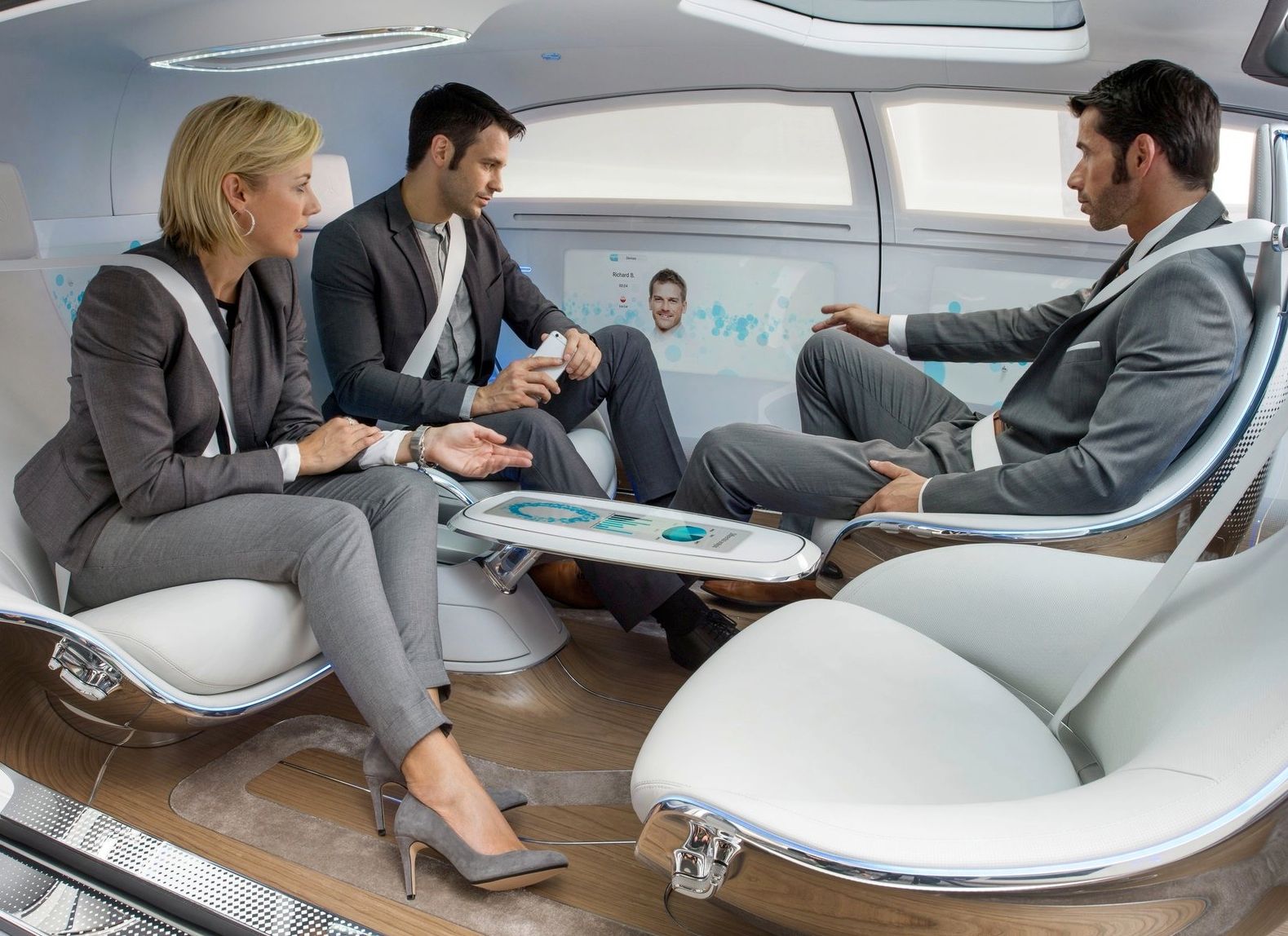It’s hard to criticise tech-led culture without appearing anti-progressive. But when it comes to autonomous car design, are we sleep-walking our way into the future?
There is something hugely appealing about the driver-less car. Even the most gear-headed among us has sat in a traffic jam and thought 'surely we could be doing something better with my time'.
At CES this year, Mercedes-Benz unveiled their F015 Luxury in Motion driverless car concept to showcase some ideas around this. It is a hugely significant juncture for both automotive design and advanced mobility, dripping with some undoubtedly very alluring tech.
A cynical view? Maybe – and it is hard not to pursue this line of thought without sounding anti-progressive
The best design has always been a reflection of its time and society. So if we look at what the F015 Luxury in Motion, and last year’s Rinspeed XchangeE (another driverless car concept) suggest, it’s a world where people want to shut themselves off from the outside and instead have a digital experience.
Yes, they perhaps sit with friends but ultimately spend more time fiddling with their phones and tablets than paying any attention to real people or the outside world. If you sit in any city centre office and look out at the people walking below, heads down, earphones in and attention completely focused on the small screen in their hand, you’d have to say the designers of the F015 and XchangeE have nailed it.
The F015 is without doubt significant – it is the first time an automotive OEM has created a dedicated, autonomous driving car concept. Yet in making this move, Mercedes-Benz has thrown up more questions than answers.
That autonomous cars are going to happen is a given. That they'll make roads safer is a sure bet too. So the questions (beyond people’s psychological issues with not driving) that arise sit around the kind of environment people want to be in, their relationship with others in the car, with the outside environment the car is travelling through and then the digital realm beyond that.
The way things stand though, we’re sleep-walking into a scenario where autonomous cars become massive digital devices – (yet another) medium through which to experience digital stuff, while being totally disconnected from the physical world around us. But is anyone stopping to ask whether that’s a desirable scenario?
Driverless cars have an undoubtedly huge role to play in the future
In reality the envisioned scenarios sees the car risk becoming a 'transition space' – like a queue in a shop – where we end up bored and then distract ourselves by watching yet another Youtube cat video.
A cynical view? Maybe – and it is hard not to pursue this line of thought without sounding anti-progressive. So let’s be clear – driverless cars have an undoubtedly huge role to play in the future. Their ability to liberate us – create less deadtime, reduce death and injury and extend private mobility to the frail, infirm or those physically unable to drive current cars is potentially fantastic.
What we're questioning here is what we want to do with our time and about who (or more likely what) – gets our attention. Four years ago, the now sadly defunct Berg London, talked about the attention grabbing qualities of devices; how they make you look less at the real world.
"The iPhone is a beautiful, seductive but jealous mistress that craves your attention, and enslaves you to its jaw-dropping gorgeousness at the expense of the world around you."
Car designers, sometimes feels the urge to merely say "look, we can offer something even better than your iPhone", but (even if that's possible) is this really such a great vision of the future? Or does it simply mean you end up with one of two in-car scenarios: a – you work on your way to and from work as well as at work; or b – cat video.
So instead, shouldn’t autonomous car design better capitalise on the unique qualities the car has – moving through real space we can see and interact with? Instead of the hermetically sealed box form and digital windows, could we not use the opportunities the autonomous car creates to:
- Make bigger and more expansive windows?
- Consider the practical reality of a single-person autonomous car, to fit the reality of 90 per cent of car journeys – not the mythical uber-GT for four smiley adults that the F015 imagines, which rarely happens in real life.
- Use design 'devices' (in the holistic sense of the word) on the inside of the car to connect the people in it, with the world outside – or vice versa?
-
Explore the idea of the car's persona – of it guiding you through interesting, un-seen bits of the city on a journey of discovery.
And if the autonomous car’s really going to be a space for having video conferences, or taking endless selfies, then why not make the interior really optimised for such scenarios? Why not go the whole hog and design an in-car selfie stick?! - Flip the notion of connectivity on its head, by creating a car that intentionally blocks external communication in order to truly shut you off and relax you as you move from A to B!
These are superficial, top-of-the-head ideas – but they each hint at the potential for autonomous cars to be a starting point for something new, unique and interesting for car design.
It is a designer's role to create a car environment which inspires, and attracts enough attention, that it can keep occupants' eyes away from the smartphone in their hands and ultimately that godforsaken cat video.
In short, we need to create alternative yet compelling visions rather than letting blind faith in connective technology sleep-walk us into the future.
This article was first published on cardesignresearch.com and has been reprinted with permission.

